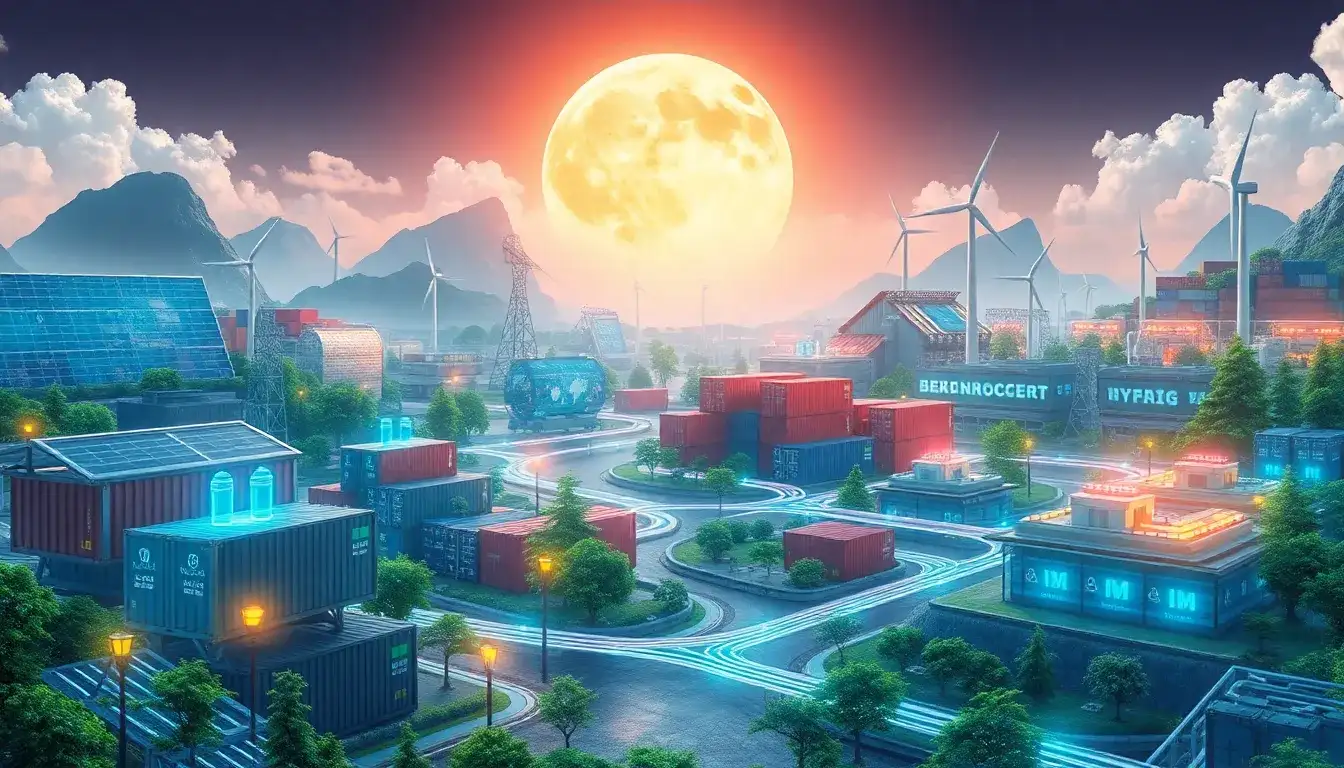A Fork in the Road for Energy Storage
Faster-than-expected price declines and a global oversupply of batteries are set to clash with a rising wave of protectionism this year. So, what does this mean for the energy storage industry? Energy storage thought leader and UN advisor Marek Kubik explores the critical issues at stake.
In 2024, Tesla shattered its own records by deploying 31.4 GWh of battery energy storage capacity, marking a remarkable 213% increase from the previous year. Market intelligence provider Bloomberg New Energy Finance adjusted its forecast twice throughout the year, predicting nearly 2.4 TWh of battery energy storage by 2030—likely an underestimate, as positive feedback loops and exponential growth are notoriously challenging to forecast.
In 2019, pumped hydro storage (PHS) accounted for 90% of global energy storage power output. However, batteries are on track to surpass that figure in 2025, as well as PHS’s related energy storage capacity measured in gigawatt-hours by 2030. Unlike fuels, batteries are a technology that follows a price-reduction “learning rate” more akin to semiconductors and solar equipment than traditional energy assets. Research from the RMI think tank shows that battery cell costs have decreased by approximately 29% with every doubling of market size in recent decades.
A new generation of lithium ferro-phosphate (LFP) cells—305Ah, 306Ah, 314Ah, and 320Ah—has begun production, boasting higher energy density and lower unit costs compared to the 280Ah cells. They required minimal reconfiguration of production lines due to their similar prismatic form factor. However, slower-than-expected demand for electric vehicles (EVs) has led to oversupply, further driving down prices for battery raw materials and intensifying price competition. In 2024, average energy storage system (ESS) prices fell by 40% to $165/kWh, marking the sharpest decline on record. In China, prices were even lower, with a 16 GWh PowerChina tender yielding average ESS prices of $66.3/kWh in December 2024.
Falling cell costs significantly benefit longer-duration energy storage systems. These projects, which involve higher cell-cost components, are becoming viable more quickly than previously anticipated. Consequently, sites with longer-duration storage are leapfrogging one- to two-hour batteries for grid frequency regulation and load shifting in the United States and Australia. For instance, Saudi Arabia’s Red Sea Project now features “the world’s largest microgrid,” consisting of a 400 MW solar array and a 225 MW/1.3 GWh battery energy storage system. The country currently has 33.5 GWh of batteries either in operation, under construction, or tendered, all with four- to five-hour storage durations, and an additional 34 GWh planned under its Vision 2030 energy strategy. This positioning could elevate Saudi Arabia to one of the top five energy storage markets globally by 2026.
Despite these promising trends, battery supply chains remain largely under the control of China. Efforts to enhance regional supply chains have often struggled to gain traction, as evidenced by the collapse of Britishvolt in the UK and the bankruptcy protection filing of Northvolt in the EU. Nevertheless, battery supply chain initiatives continue amid a more protectionist global landscape. The US Inflation Reduction Act encourages local BESS manufacturing, while import duties on Chinese products aim to create jobs and reduce reliance on imports. However, these measures may hinder the adoption of grid-scale energy storage and EVs due to higher short-term costs. In response, China has proposed a plan to ban the export of cathode and anode production equipment, as well as technologies for lithium extraction and refinement.
Even if ESS and battery cell manufacturing become localized, raw materials will still be concentrated in China, creating a bottleneck upstream. By 2025, the global energy storage market may divide into two segments. Protectionist markets like the United States, India, and MENA will prioritize localized supply chains to create jobs, while the Global South will focus on tariff-free imports to enhance affordability and stimulate economic growth. This dynamic mirrors historical globalization debates, such as the Corn Laws of the 1800s, as the energy storage sector grapples with similar tensions between trade-driven innovation and the risks of economic inequality and job displacement.
Looking ahead, 2025 is poised to mark a significant turning point for the energy storage industry. As technological advancements and declining costs accelerate adoption and the feasibility of 100% renewable energy grids, markets are increasingly ready to redefine their energy landscapes. The global race for supply chain dominance highlights that energy storage is no longer merely a supportive technology; it is now a central pillar of the energy transition. The fragmentation of global supply chains, driven by protectionist policies, raises crucial questions about energy equity and innovation. Will the push for localized manufacturing enhance resilience, or will it impede progress in markets reliant on affordable imports, merely shifting the “choke point” further upstream?
Navigating these complexities presents an opportunity for the energy storage sector to do more than just power economies; it can set a precedent for how industries balance competition, cooperation, and sustainability in the face of global challenges. The choices made today will have lasting implications beyond 2025, shaping not only the energy transition but also the broader socioeconomic trajectory of the coming decades.
About the Author
Marek Kubik is a thought leader in the energy industry, striving to realize the world’s first 100% renewable power grid at scale by 2030. He serves in advisory roles with the United Nations and on the board of Swiss private bank Reichmuth & Co. A founding member of storage technology supplier Fluence, he was recognized as a “Forbes 30 Under 30” honoree for his contributions to accelerating the energy transition. Marek holds master’s and doctoral degrees in engineering.
Original article by NenPower, If reposted, please credit the source: https://nenpower.com/blog/navigating-the-future-of-energy-storage-amid-price-drops-and-protectionism/



